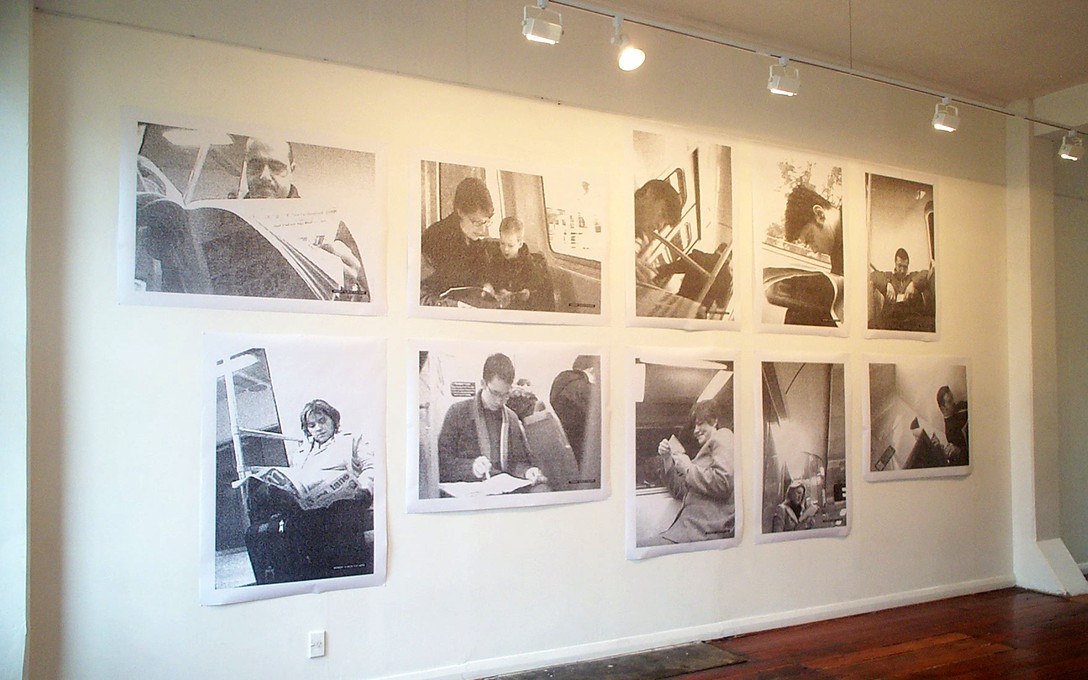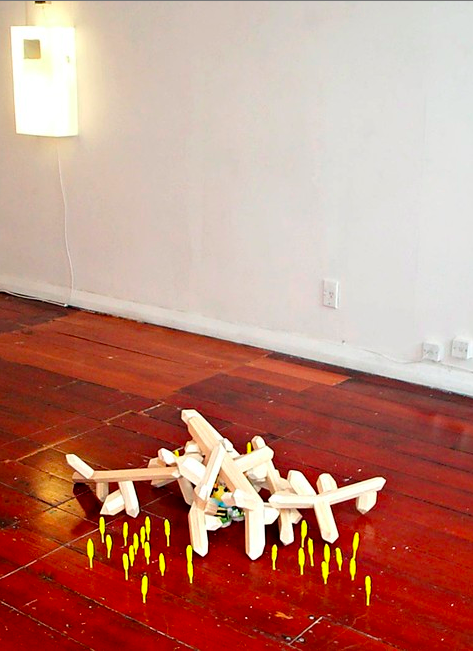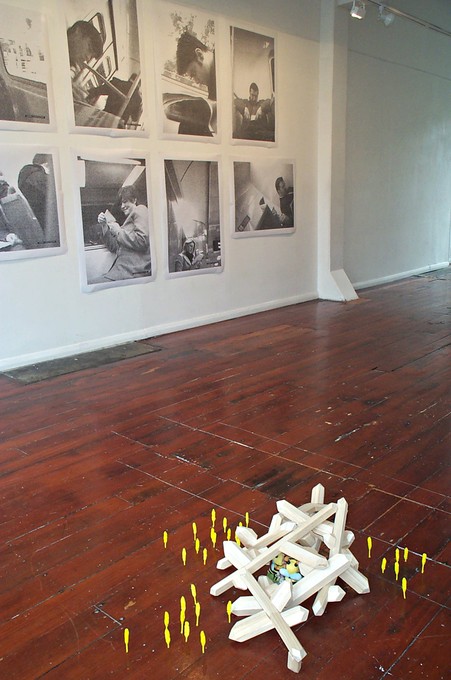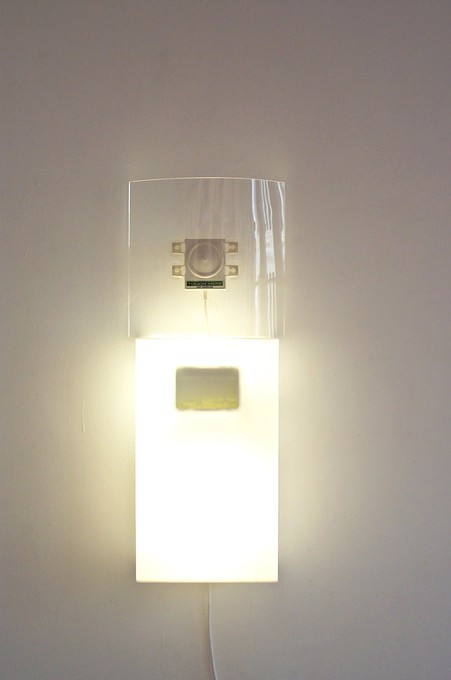Satellite City

archived
17 Sep
–
5 Oct
2002
Dominic Forde, Douglas Kelaher, Rachel Brunton
Exploring urban landscapes and their populace is the subject of this exhibition curated by Rosemary Ford of the Physics Room (Christchurch). Although at first the work by artists Douglas Kelaher, Dominic Forde and Rachel Brunton may seem disparate, on closer inspection they work well together. Each piece suggests a different kind of society, fantastical, contemporaneous or futuristic, breaking away from the overwhelming dominance of the rural landscape in New Zealand art practice.
Kelaher’s ‘Pompom Dinosaur Boys’ who ‘strut through their glass mountain city having a great time’ are painted porcelain figurines of boys in dinosaur suits holding orange, red, green and purple pompoms while playing follow the leader through layers of glass. The effect is striking and fun, with the mountain of the glass Buddha ‘floating’ above the door of the gallery space echoing the colours of the dinosaur’s pom poms. At the opposite end of the gallery in the ‘crystal wood honeycomb’ similar porcelain painted boys in beesuits play. There is a suggestion here of the social cliques that quickly appear in urban spaces, with people identifying their ‘type’ and quickly joining the group formation.
Meanwhile Dominic Forde’s ‘Monday to Friday’ dominates one wall with huge blown up black and white photocopies of commuters reading on trains or buses. Shutting out the world, each is determinedly unaware of the people around them. The time and date typed on each lends a suggestion of surveillance to the images.
Rachel Brunton’s ‘Novadrome’ emits strangely familiar voices as you walk towards it – the sounds could possibly be policeman communicating with eachother, or is it simply everyday conversation distorted into something alien? The lightbox contains a window where you can see inside the work to a sloping circuit board which is a model of a city complete with skyscrapers and outer suburbs.
In the examination of urban landspaces (as opposed to the rural images of more traditional NZ art we are all familiar with) Ford’s exhibition darkly suggests that the Satellite City is not only a place for joy and diversity, but also of enclosure and possibly fear.
Curated by Rosemary Forde
Exhibition Essays
Number Nine
9
essays
Edited by Louise Tulett





Providing an opportunity for experimental curation, the Number Nine series (August – December 2002) set out to foster discourse and critical debate relating to curatorial practice and its role in contemporary New Zealand art practice. The series was the followed by a printed catalogue, the first to be produced by Enjoy.
